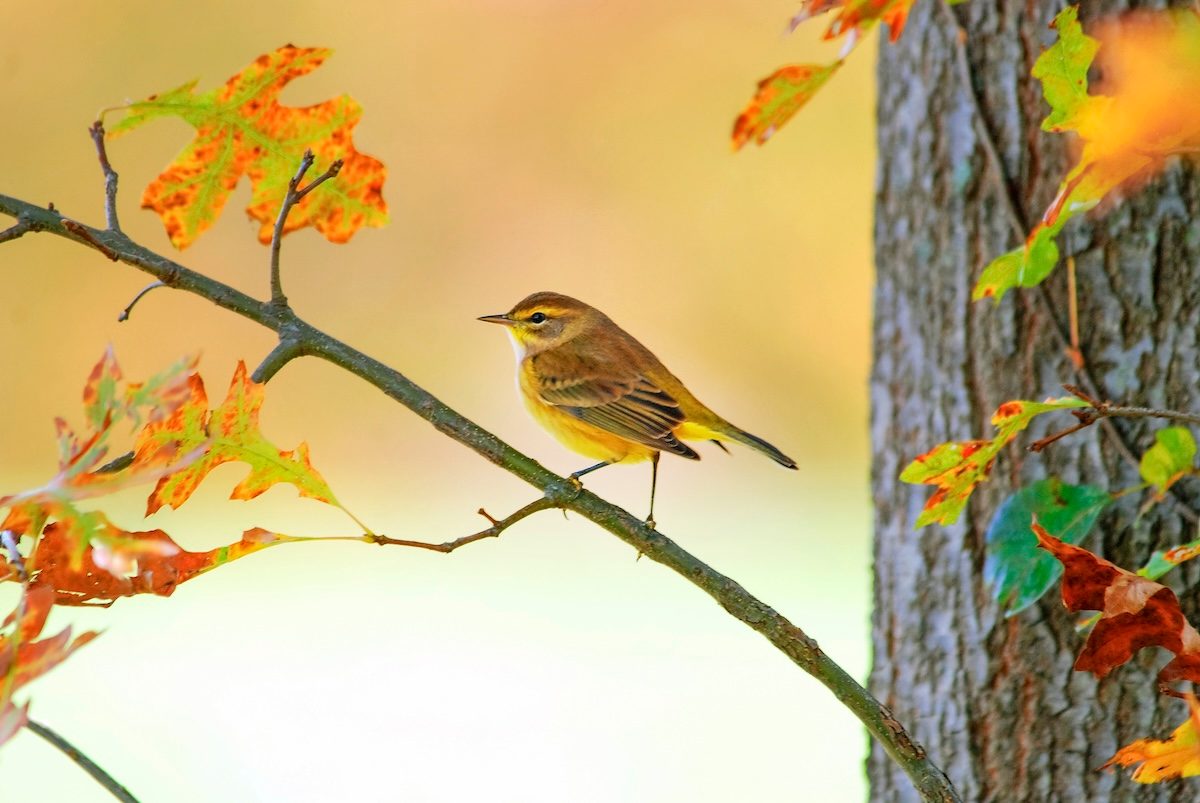Learn what a palm warbler looks like, where birders can find these warblers in different seasons, and what foods these warblers prefer to eat.

How to Identify a Palm Warbler

On This Page
Palm Warbler Range and Habitat

“I spotted this bird (above) in my backyard near a warbler, but I couldn’t identify its species. What kind of bird is it?” asks Birds & Blooms reader Sandra Castle of Vero Beach, Florida
Birding experts Kenn and Kimberly Kaufman say, “This bird is also a warbler. It’s a palm warbler, a type that spends the summer in the boreal spruce forests and bogs in eastern Canada and the northeastern U.S., migrating south to spend the winter in the southeastern states and around the Caribbean.
Look for them on islands and along the coasts. In Florida, it’s the second-most common warbler seen in winter, after the yellow-rumped warbler. They visit coastal Texas from midautumn to early spring.
Although most members of the warbler family are forest birds, palm warblers often venture out in the open and are frequently seen foraging on the ground in the colder months.
What Does a Palm Warbler Look Like?

The keys to recognizing this species are the yellow under the tail and the reddish brown cap and a yellow eyebrow stripe. Palm warblers often spend time on the ground, hopping about and bobbing their tails up and down like a palm tree swaying in the wind.
Male and female palm warblers both look similar.
Learn how to identify a Cape May warbler.
Palm Warbler in Non-breeding Plumage

“Can you identify this bird (above)?” asks reader James Firmin of Friendswood, Texas.
Kenn and Kimberly say, “Seen here in its confusing winter plumage, this is a palm warbler. The thin bill and white spots on the tail are typical of warblers. In winter, key field marks for this species include the strong face pattern, with dark eyeline and noticeable pale eyebrow, overall brown look, and the touch of yellow under the base of the tail.”
Yellow warbler vs goldfinch: Here’s how to tell the difference.
Palm Warbler Song

This bird’s buzzy trilling notes are sometimes compared to a chipping sparrow’s song.
Bird sounds courtesy of the Cornell Lab of Ornithology
What Do Palm Warblers Eat?

According to Kenn and Kimberly, insects make up most of their diet, but they also go for natural nectar sources, as this bird above is demonstrating. They feed in short-to-medium vegetation rather than high in the treetops.
Next, learn how to identify pine warblers.
About the Experts
Kenn and Kimberly Kaufman are the official bird experts for Birds & Blooms. They are the creators of the Kaufman Field Guide series and they lead birding trips all over the world.




















